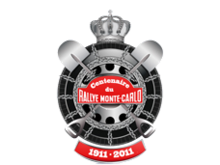Cross posted from The Stars Hollow Gazette
This is your morning Open Thread. Pour your favorite beverage and review the past and comment on the future.
Find the past “On This Day in History” here.
February 1 is the 32nd day of the year in the Gregorian calendar. There are 333 days remaining until the end of the year (334 in leap years).
On this day in 1896, the opera La Bohème receives its premiere in Turin.
La Bohème is an opera in four acts by Giacomo Puccini to an Italian libretto by Luigi Illica and Giuseppe Giacosa, based on Scènes de la vie de bohème by Henri Murger. The world premiere performance of La Bohème was in Turin on 1 February 1896 at the Teatro Regio and conducted by the young Arturo Toscanini. Since then La Bohème has become part of the standard Italian opera repertory and is one of the most frequently performed operas internationally. According to Opera America, it is the second most frequently performed opera in the United States, just behind another Puccini opera, Madama Butterfly. In 1946, fifty years after the opera’s premiere, Toscanini conducted a performance of it on radio with the NBC Symphony Orchestra. This performance was eventually released on records and on Compact Disc. It is the only recording of a Puccini opera by its original conductor.
According to its title page, the libretto of La bohème is based on Henri Murger‘s novel, Scènes de la vie de bohème, a collection of vignettes portraying young bohemians living in the Latin Quarter of Paris in the 1840s. Although usually called a novel, it has no unified plot. Like the 1849 play by Murger and Thèodore Barrière, the opera’s libretto focuses on the relationship between Rodolfo and Mimi, ending with her death. Also like the play, the libretto combines two characters from the novel, Mimi and Francine, into a single Mimi character.
Much of the libretto is original. The main plots of acts two and three are the librettists’ invention, with only a few passing references to incidents and characters in Murger. Most of acts one and four follow the novel, piecing together episodes from various chapters. The final scenes in acts one and four, the scenes with Rodolfo and Mimi, resemble both the play and the novel. The story of their meeting closely follows chapter 18 of the novel, in which the two lovers living in the garret are not Rodolphe and Mimi at all, but rather Jacques and Francine. The story of Mimi’s death in the opera draws from two different chapters in the novel, one relating Francine’s death and the other relating Mimi’s.
The published libretto includes a note from the librettists briefly discussing their adaptation. Without mentioning the play directly, they defend their conflation of Francine and Mimi into a single character: “Chi puo non confondere nel delicato profilo di una sola donna quelli di Mimi e di Francine?” (“Who cannot detect in the delicate profile of one woman the personality both of Mimi and of Francine?”) At the time, the novel was in the public domain, Murger having died without heirs, but rights to the play were still controlled by Barrière’s heirs.

 On this day in 1865, The
On this day in 1865, The  On this day in 1969,
On this day in 1969,  On this day in 1845, Edgar Allan Poe’s famous poem
On this day in 1845, Edgar Allan Poe’s famous poem  On this day in 1916,
On this day in 1916,  On this day in 1888, the
On this day in 1888, the  On this day in 1788, Captain Arthur Phillip guides a fleet of 11 British ships carrying convicts to the colony of New South Wales,
On this day in 1788, Captain Arthur Phillip guides a fleet of 11 British ships carrying convicts to the colony of New South Wales,  On this day in 1905,
On this day in 1905,  On this day in 1848, A millwright named James Marshall
On this day in 1848, A millwright named James Marshall  On this day in 1849,
On this day in 1849,  On this day in 1968, the NBC-TV show, “Rowan & Martin’s Laugh-In”, debuted “from beautiful downtown Burbank” on this night. The weekly show, produced by George Schlatter and Ed Friendly, then Paul Keyes, used 260 pages of jokes in each hour-long episode. The first 14 shows earned “Laugh-In” (as it was commonly called) 4 Emmys. And “you bet your bippy”, Nielsen rated it #1 for two seasons. Thanks to an ever-changing cast of regulars including the likes of Dan Rowan, Dick Martin, Arte Johnson, Goldie Hawn, Ruth Buzzi, JoAnne Worley, Gary Owens, Alan Sues, Henry Gibson, Lily Tomlin, Richard Dawson, Judy Carne, President Richard Nixon (“Go ahead, sock it to me!”), the show became the highest-rated comedy series in TV history.
On this day in 1968, the NBC-TV show, “Rowan & Martin’s Laugh-In”, debuted “from beautiful downtown Burbank” on this night. The weekly show, produced by George Schlatter and Ed Friendly, then Paul Keyes, used 260 pages of jokes in each hour-long episode. The first 14 shows earned “Laugh-In” (as it was commonly called) 4 Emmys. And “you bet your bippy”, Nielsen rated it #1 for two seasons. Thanks to an ever-changing cast of regulars including the likes of Dan Rowan, Dick Martin, Arte Johnson, Goldie Hawn, Ruth Buzzi, JoAnne Worley, Gary Owens, Alan Sues, Henry Gibson, Lily Tomlin, Richard Dawson, Judy Carne, President Richard Nixon (“Go ahead, sock it to me!”), the show became the highest-rated comedy series in TV history.  On this day in 1911, the first
On this day in 1911, the first